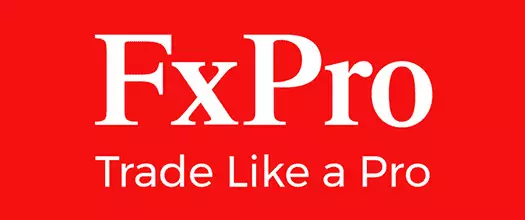Stock CFD trading is a financial derivative method where traders speculate on the price movements of individual company shares via Contracts for Difference (CFDs). This allows them to profit from price changes in either direction without owning the actual shares. Our experts have reviewed several FCA-regulated brokers providing access to stock CFDs to UK traders.
 Plus500
Plus500 Pepperstone
Pepperstone CMC Markets
CMC Markets eToro
eToro Eightcap
Eightcap FxPro
FxProBelow you can find more information about the best stock CFD trading platforms in the UK:
- Plus500, an FCA-regulated broker, offers hundreds of share CFDs on major companies from the US, Germany, and the UK, enabling retail customers to increase their market exposure with leverage of up to 1:5.
- Pepperstone, a brand authorised by the FCA, provides an impressive range of over 1,100 shares available for CFD trading and spread betting. Spreads are competitive and so are the commissions charged on share CFDs (only 0.1% per side for CFDs on UK shares).
- CMC Markets caters to its UK clientele with an FCA license and a versatile selection of over 10,000 shares, giving them the option to spread bet or engage in CFD trading. The broker ensures lightning-fast order execution and provides quantitative analysis on the stock market by Morningstar.
- Clients of eToro can dip their toes in over 6,200 shares available through CFDs with spreads from 0.15%. Additionally, UK customers can purchase and hold actual shares without paying commissions. The broker is authorised by the FCA.
- Eightcap, another FCA-authorised brand, offers over 600 markets to UK traders, including hundreds of share CFDs on major companies like Apple, Amazon, Netflix, and Tesla. Stock traders benefit from detailed market analysis available in the broker’s educational section, Eightcap Labs.
- FxPro caters to stock traders from the UK with an FCA license and a diverse selection of over 1,800 shares of companies from the UK, US, Portugal, Germany, France, Switzerland, and more. All major industries and sectors are well-covered.
In this article, we will focus on stock CFD trading in the UK, covering the following topics:
- What is stock CFD trading, and how does it work?
- Popular stock CFD trading markets among UK traders
- How to get started with stock CFD trading?
- FCA caps on trading stock CFDs with leverage
- Strategies for successful stock CFD trading
- Comparison between stock CFD trading, spread betting, and real share trading
By the end of this article, UK traders will possess a comprehensive understanding of stock CFD trading, empowering them to make well-informed decisions regarding their trading activities.
What Is Stock CFD Trading?
Stock CFD trading is a type of financial trading that involves speculating on the price movements of stocks without actually owning the underlying assets. CFDs, or contracts for difference, are agreements between two parties to exchange the difference in value of a particular stock between the time the contract is opened and the time it is closed. This type of trading allows UK traders to profit from both rising and falling markets, making it a popular choice for those looking to diversify their investment portfolios.
Popular Stock CFD Trading Markets among UK Traders
Here is a list of popular stock CFD trading markets among UK traders. Please note that popularity can fluctuate based on market conditions and news:
UK Equities:
- FTSE 100 Companies: CFDs on major UK blue-chip companies listed on the London Stock Exchange (LSE) are very popular. Examples include:
- BP plc
- Barclays plc
- Lloyds Banking Group plc
- Vodafone Group
- HSBC
- Rolls-Royce Holdings
- Tesco
- Unilever
- FTSE 250 Companies: While less traded than the top 100, CFDs on these mid-cap UK companies also see interest:
- Carnival Corporation & plc
- Hargreaves Lansdown plc
- Games Workshop Group plc
- Polar Capital Technology Trust
- Darktrace plc
- LondonMetric Property plc
- IG Group Holdings plc
- Hiscox Ltd
US Equities:
- Major US Tech Stocks: These are often highly volatile and attract significant trading volume:
- Apple (AAPL)
- Amazon (AMZN)
- Tesla (TSLA)
- NVIDIA (NVDA)
- Alphabet (GOOGL/GOOG)
- Meta Platforms (META)
- Other Large-Cap US Stocks: Well-known companies across various sectors:
- Microsoft (MSFT)
- Bank of America (BAC)
- Coca-Cola (KO)
- Exxon Mobil (XOM)
European Equities:
- German Stocks (DAX): Companies like Adidas, Deutsche Bank, and BMW.
- French Stocks (CAC 40): Companies like TotalEnergies and LVMH.
Other International Equities:
Depending on global trends and news, certain Asian stocks (e.g., Alibaba) can also see periods of high trading volume.
How to Go About Stock CFD Trading?
To get started with stock CFD trading, UK traders need to follow a series of steps. Here’s a detailed guide:
- Choose a suitable broker: UK traders need to choose a broker that offers stock CFD trading and is regulated by the UK financial regulator, the Financial Conduct Authority (FCA). It’s essential to research and compare different brokers to find the one that best suits their needs.
- Open an account: Once a broker is selected, UK traders must open an account. This typically involves providing personal and financial information.
- Verify their identity: As part of the account opening process, UK traders will need to verify their identity. This is a standard procedure to prevent money laundering and ensure that the trader is who they claim to be.
- Deposit money: UK traders must deposit money into their accounts to start trading. The minimum deposit amount varies depending on the broker, typically between £0 and £100. Traders should ensure they understand the deposit and withdrawal procedures before funding their accounts.
- Conduct an analysis: Before opening a trade, UK traders should analyse the market. This involves using technical and fundamental analysis to identify potential trading opportunities and make informed decisions.
- Open a stock CFD trade: When a trading opportunity is identified, UK traders can open a stock CFD trade. This involves specifying the amount they want to trade, the leverage they want to use, and the stop-loss and take-profit levels.
- Monitor and close the trade: Once a trade is open, UK traders need to monitor it and close it when their trading objectives are met or when they want to limit their losses. This can be done by clicking the “close” button, and the trade will be settled at the current market price.
- Set stop-loss and take-profit levels: To manage risk and lock in profits, UK traders should set stop-loss and take-profit levels. These levels can be adjusted as needed, and they help traders to limit their potential losses and realise their profits.
By following these steps, UK traders can get started with stock CFD trading and begin to speculate on the price movements of stocks. It’s essential to remember that trading carries risks, and traders should always use proper risk management techniques to protect their capital.
Using Leverage to Trade Stock CFDs in the UK
The Financial Conduct Authority (FCA) has implemented leverage limits for Contracts for Difference (CFDs) sold to retail clients, capping leverage between 1:30 and 1:2, depending on the volatility of the underlying asset. For stock CFDs, which are generally more volatile than major currency pairs, the leverage cap is typically set at 1:5. This means retail traders must provide a margin of at least 20% of the position’s value when trading stock CFDs.
Strategies for Stock CFD Trading
Stock CFD trading, due to its leveraged nature and flexibility to trade both long and short, lends itself to a variety of trading strategies. Here are some popular strategies employed by traders:
- Day Trading:
- Concept: Opening and closing positions within the same trading day to profit from intraday price fluctuations.
- Techniques: Often involves using short-term charts (e.g., 1-minute, 5-minute, 15-minute), technical indicators (e.g., moving averages, RSI, MACD, Bollinger Bands), and high trading frequency.
- Focus: Capturing small price movements and avoiding overnight holding costs. Requires significant time commitment and quick decision-making.
- Scalping:
- Concept: A very short-term strategy aiming to make numerous small profits from tiny price changes.
- Techniques: Extremely short timeframes (seconds to minutes), high frequency of trades, and often focuses on exploiting the bid-ask spread or very short-term momentum.
- Focus: Accumulating small gains that add up over time. Requires fast execution and tight spreads.
- Swing Trading:
- Concept: Holding positions for several days to weeks to profit from larger price “swings.”
- Techniques: Analysing daily and weekly charts, looking for patterns, support and resistance levels, and using technical indicators to identify potential price movements.
- Focus: Capturing medium-term trends and requiring less constant monitoring than day trading.
- Trend Following:
- Concept: Identifying and trading in the direction of an established trend.
- Techniques: Using longer-term charts and indicators (e.g., moving averages, trendlines) to confirm the direction of the trend and entering positions accordingly.
- Focus: Riding significant price movements and potentially holding positions for weeks or months.
- Breakout Trading:
- Concept: Entering a trade when the price breaks through a significant level of support or resistance.
- Techniques: Identifying key price levels and setting entry orders just above resistance (for long positions) or below support (for short positions). Often combined with volume analysis to confirm the strength of the breakout.
- Focus: Capitalising on the potential for significant price movement following a breakout.
- Range Trading:
- Concept: Identifying stocks trading within a defined price range and buying at the support level and selling at the resistance level.
- Techniques: Drawing horizontal lines to identify the upper and lower boundaries of the range and using oscillators (e.g., RSI, Stochastic) to identify potential overbought or oversold conditions.
- Focus: Profiting from sideways price action.
- News Trading:
- Concept: Trading based on the immediate price reaction to significant economic or company-specific news releases.
- Techniques: Monitoring economic calendars and news sources, understanding the potential impact of different news events, and reacting quickly to price movements after the release.
- Focus: Capturing short-term volatility and price spikes. Requires understanding market sentiment and potential overreactions.
- Technical Analysis Strategies:
- Chart Patterns: Identifying and trading based on formations like triangles, flags, head and shoulders, etc., which are believed to predict future price movements.
- Indicator-Based Strategies: Combining multiple technical indicators to generate buy or sell signals. For example, using moving average crossovers with RSI confirmation.
- Fibonacci Retracement and Extension: Using Fibonacci levels to identify potential support, resistance, and target price levels.
- Fundamental Analysis (Applied to CFD Trading):
- While CFDs don’t represent ownership, understanding the underlying company’s fundamentals (financial health, earnings reports, industry trends) can inform longer-term trading biases and help identify potentially undervalued or overvalued stocks for swing or trend trading strategies.
Important Considerations for Stock CFD Trading Strategies:
- Leverage Management: Crucial due to the amplified risk. Always use appropriate stop-loss orders and manage position sizes carefully.
- Risk Management: Implement strategies to limit potential losses, such as setting stop-loss and take-profit orders.
- Understanding Market Volatility: Stock prices can be highly volatile, especially around news events. Be aware of the potential for rapid price swings.
- Choosing the Right Broker and Platform: Ensure your broker offers the tools, charting capabilities, and execution speed required for your chosen strategy.
- Continuous Learning and Adaptation: The stock market is dynamic. Continuously analyse your trades, learn from your mistakes, and adapt your strategies as market conditions change.
- Backtesting: Before implementing a strategy with real capital, it’s advisable to backtest it on historical data to see how it would have performed.
Remember that no trading strategy guarantees profits, and all trading involves risk. It’s essential to educate yourself thoroughly and practise on a demo account before trading stock CFDs with real money.
Other Methods for Stock Trading
When it comes to stock trading, besides stock CFDs, UK traders can choose between:
- Buying physical shares (long-term investment)
- Using spread betting (tax-efficient way to trade, available through UK-based brokers)
- Options trading, Ftures Trading
We will briefly compare stock CFD trading, spread betting, and trading real shares, so UK traders have a comprehensive understanding of how to approach this popular asset class.
Stock CFDs and Spread Betting
Both CFDs (Contracts for Difference) and spread betting are leveraged derivative products that allow UK traders to speculate on the price movements of various financial instruments without owning the underlying asset. However, they have distinct characteristics:
- How the Trade is Priced and Sized:
- CFDs: You trade contracts that represent a specific quantity of the underlying asset. Profit or loss is calculated by the difference between the opening and closing price, multiplied by the number of contracts. CFDs are typically quoted at or very close to the underlying market price.
- Spread Betting: You bet a specific amount of money per point of price movement of the underlying asset. The broker quotes two prices: a slightly higher buying price and a slightly lower selling price (the spread). Your profit or loss is your stake per point multiplied by the number of points the price moves in your favor or against you. The broker’s profit is primarily built into this spread.
- Taxation (UK):
- CFDs: Profits from CFD trading are subject to Capital Gains Tax (CGT) in the UK. You must report gains above the annual CGT allowance (currently £3,000 for 2025/26) and pay CGT accordingly. However, losses from CFD trading can be offset against other capital gains to reduce your CGT liability.
- Spread Betting: Profits from spread betting are generally exempt from Capital Gains Tax in the UK, as it’s legally classified as a form of gambling. However, losses from spread betting cannot be offset against CGT.
- Commission and Charges:
- CFDs: Brokers often charge a commission on CFD trades, particularly for shares, in addition to the spread. For other markets like Forex and commodities, the cost is usually primarily within the spread.
- Spread Betting: Typically, there is no commission charged on spread betting. The broker’s fee is incorporated into the wider spread offered.
- Contract Structure and Expiry:
- CFDs: Most CFDs do not have a fixed expiry date, allowing traders to keep positions open indefinitely (though overnight funding charges may apply). Some CFDs on futures contracts do have expiry dates.
- Spread Betting: Spread bets often have fixed expiry dates, ranging from short-term to longer-term “forward” bets.
- Trading Units:
- CFDs: Trades are typically made in specific contract sizes or the equivalent number of shares.
- Spread Betting: Trades are made by choosing a stake per point (e.g., £1 per point).
- Market Access and Regulation:
- CFDs: Are available globally and are generally considered financial instruments, subject to financial regulations (like MiFID II in Europe, including the UK’s onshored version).
- Spread Betting: Is more popular in the UK and Ireland, and, while regulated by the FCA, has a unique legal status due to its classification as betting.
In summary, while both offer leveraged speculation on price movements without ownership, CFDs are treated more as financial instruments with potential capital gains tax implications and often involve commissions, whereas spread betting in the UK benefits from being tax-free on profits, with the broker’s charge mainly in the spread. The way trade size is determined (contracts vs. stake per point) also differs.
Stock CFD Trading vs. Real Shares Trading
Stock CFD (Contract for Difference) trading and real shares trading offer UK traders different ways to participate in the stock market. Here’s a breakdown of their key differences:
Stock CFD Trading:
- No Ownership: You don’t actually own the underlying shares. Instead, you’re trading a contract with your broker to exchange the difference in the stock’s price between when you open and close the position.
- Leverage: Typically available, allowing you to control a larger position with a smaller amount of capital (margin). This can amplify both profits and losses.
- Going Short: Straightforward, allowing you to potentially profit from falling stock prices.
- Lower Capital Outlay: Generally requires less initial capital due to leverage.
- Transaction Costs: Usually involves a spread (the difference between the buying and selling price) and potentially commission. Overnight funding fees may apply. No Stamp Duty in the UK.
- Dividends: Typically reflected as an adjustment to your account, not direct dividend payments.
- No Voting Rights: As you don’t own the shares, you have no shareholder voting rights.
- Regulation (UK): Regulated by the FCA as a derivative product.
- Suitability: Often favored for short-term speculation and hedging.
Real Shares Trading:
- Ownership: You buy and own the actual shares of the company, becoming a shareholder.
- No Direct Leverage (Typically): Requires the full capital to purchase the shares upfront. Margin accounts are a separate arrangement.
- Going Short: Possible but more complex (short selling).
- Higher Capital Outlay: Requires the full value of the shares plus transaction costs.
- Transaction Costs: Primarily brokerage commissions. Stamp Duty Reserve Tax (SDRT) of 0.5% applies to most UK share purchases.
- Dividends: You are entitled to receive any dividends declared by the company.
- Voting Rights: You may have shareholder voting rights depending on the share class.
- Regulation (UK): Regulated by the FCA under rules for securities trading.
- Suitability: Typically favored for longer-term investment and potential dividend income.
In essence, stock CFDs are leveraged derivative products ideal for short-term trading and speculation without the responsibilities of ownership. Real shares trading involves direct ownership, making it more suitable for long-term investment and providing shareholder benefits.
FAQs
What are the costs involved in stock CFD trading?
The main costs typically include:
- Spread: The difference between the buying and selling price quoted by your broker.
- Commission: Some brokers charge a commission per trade.
- Overnight Funding Fees (Swap Fees): Charged for holding positions open overnight.
How does leverage work in stock CFD trading?
Leverage allows you to control a larger position with a smaller amount of capital (margin). For example, with a leverage of 1:5, you could control £5,000 worth of stock with £1,000 of your own money. While this can amplify potential profits, it also significantly increases potential losses. The FCA in the UK imposes leverage limits for retail clients trading stock CFDs (currently a maximum of 1:5 for individual equities).
What customer protection mechanisms do stock CFD trading brokers offer?
Reputable stock CFD trading brokers offer various customer protection mechanisms, including negative balance protection, segregation of client funds, and investor compensation schemes.
What are the benefits and risks of stock CFD trading?
The benefits of stock CFD trading include flexibility, leverage, and access to a wide range of markets. The risks include the potential for significant losses, market volatility, and liquidity risks. UK traders must carefully consider these factors before trading stock CFDs.
Can I trade stock CFDs on a mobile device?
Yes, most brokers offer mobile trading platforms that allow UK traders to trade stock CFDs on their smartphones or tablets.